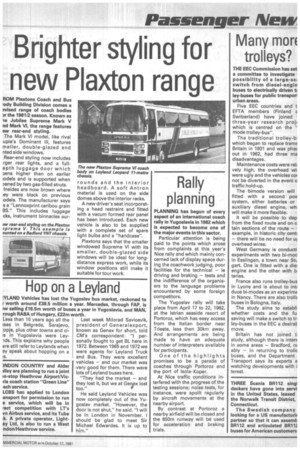Many mon trolleys?
Page 13

If you've noticed an error in this article please click here to report it so we can fix it.
THE EEC Commission has set a committee to investigate possibility of a large-sci switch from diesel-engin buses to electrically driven ti ley-buses for public transpor urban areas.
Five EEC countries and t EFTA members (Finland Switzerland) have joined • three-year research proj4 which is centred on the ' mode trolley-bus".
The traditional trolley-b' which began to replace tramE Britain in 1931 and was phaE out in 1962, had three ma disadvantages.
Maintenance costs were reh vely high, the overhead wi were ugly and the vehicles col not be diverted in the event o traffic hold-up.
The bimode version will fitted with a second pov system, either batteries or auxiliary diesel engine, whi will make it more flexible.
It will be possible to dep from the fixed route and on c tam n sections of the route — • example, in historic city cent' — there will be no need for uf overhead wires.
West Germany is conducti experiments with two bi-mod in Esslingen, a town near StL gart. One is fitted with a die: engine and the other with b teries.
France also runs trolley-bus in Lyons and is about to inti duce bi-modes as an experimE in Nancy. There are also trollE buses in Bologna, Italy.
The study aims to establi whether costs and the fu saving will make a switch to In ley-buses in the EEC a desirat move.
Britain has not joined t study, although there is interE in some areas — Bradford, nt ably — in returning to trollE buses, and the Department Transport says its experts a watching developments with i terest.








































